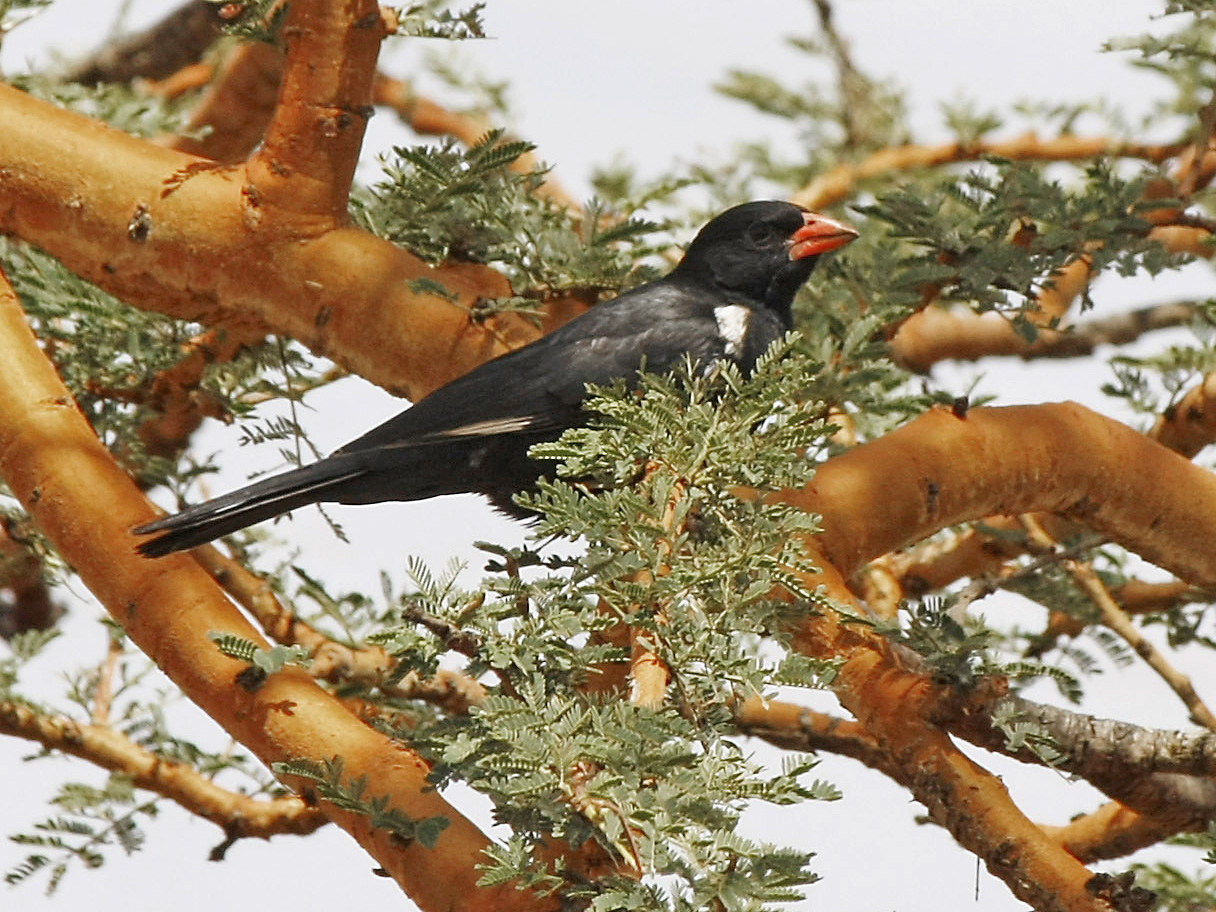
Bubalornis niger
SUBFAMILY
Bubalornithinae
TAXONOMY
Bubalornis niger A. Smith, 1836, Kurrichane, South Africa.
OTHER COMMON NAMES
French: Alecto а bec rouge; German: Bьffelweber; Spanish:
Tejedor Bъfalo de Pico Rojo.
PHYSICAL CHARACTERISTICS
8.7 in (22 cm); unsexed 2.7–2.9 oz (78–82 g). Male dark blackish
brown, white patch in wings in flight. White bases to body
feathers may show when plumage ruffled. Bill and legs red. Female
dark brown, variably flecked with white on underparts.
Bill and legs brown. Juveniles paler with more white on underparts.
Bill orange-yellow.
DISTRIBUTION
Ethiopia and Somalia through eastern Africa to Angola, Zambia,
and northern Mozambique, south to northern South Africa.
HABITAT
Dry thornveld with large trees.
BEHAVIOR
In groups or non-breeding flocks up to 50 birds, may associate
with other species. Usually present at nest sites throughout the
year.
FEEDING ECOLOGY AND DIET
Mainly insects, also seeds and fruit. Most food collected on the
ground.
REPRODUCTIVE BIOLOGY
Colonial and polygynous, often polygynandrous (each male
mates with several females, and female mates with more than
one male), since in most broods genetic studies indicate multiple
paternity. Nest is a large mass of thorny twigs, containing up to
13 nest chambers, lined with green vegetation. Male builds main
structure and starts lining chambers; female adds further lining
before laying. Phalloid organ not inserted during copulation, but
stimulation from this structure may be essential for successful
mating. Lays three to four eggs in spring and summer. Incubation
11 days, fledging 20–23 days. Female alone incubates and
does most feeding of chicks; male feeds young occasionally.
CONSERVATION STATUS
Not threatened; dependent on large trees, but much habitat is
sparsely populated.
SIGNIFICANCE TO HUMANS
None known; may use human-made structures as nest sites, or
nest near homesteads.
Other popular Animals
Photo Gallery of - Red-billed buffalo weaver




 Animalia Life
Animalia Life